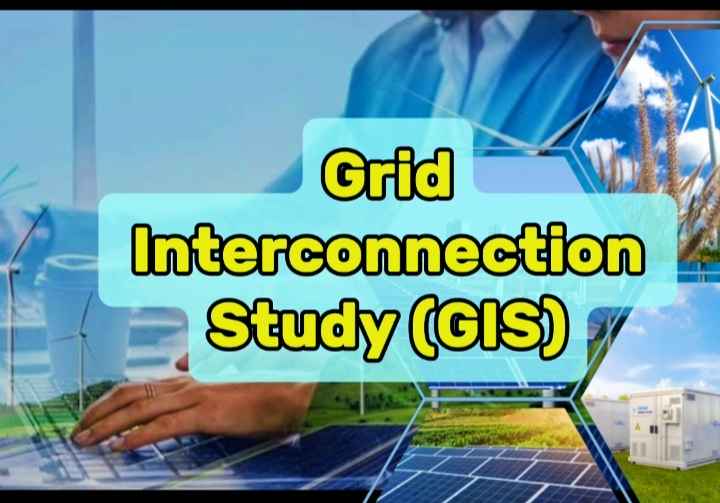
Grid Interconnection Study (GIS) is a crucial analysis in the energy sector that involves assessing the technical, economic, and regulatory aspects of connecting a power generation source (such as solar, wind, hydro, or fossil fuel-based plants) to the existing electrical grid. As energy systems around the world evolve to incorporate renewable energy sources and meet growing demands, understanding the optimal way to integrate these energy sources into the grid becomes essential. GIS helps ensure that the electrical grid can handle additional generation while maintaining stability, reliability, and efficiency.
In this blog post, we’ll explore what a Grid Interconnection Study entails, the key parameters to consider during the study, and the benefits of conducting one.
What is a Grid Interconnection Study (GIS)?
A Grid Interconnection Study refers to a series of detailed technical assessments that determine how to integrate new power generation facilities into the existing electrical grid. The study is conducted by utilities, system operators, and power developers to evaluate the impact of new generation capacity on grid stability, power quality, and the transmission system’s ability to handle the additional load. Key elements of a GIS involve:
- Assessment of Grid Capacity: Checking if the grid has the capacity to accommodate new generation without negatively impacting its operation.
- Power Flow Analysis: Simulating the flow of electricity across the network under different conditions to ensure that the grid can handle the additional power from new generators.
- System Stability and Reliability Analysis: Verifying that the integration of new generation sources doesn’t destabilize the grid.
- Protection and Control Requirements: Identifying any necessary changes or upgrades to grid protection and control mechanisms to prevent faults and outages.
Key Parameters Considered in Grid Interconnection Studies
Several technical parameters are crucial to ensuring the success of the Grid Interconnection Study. These include:
- Voltage Levels: Voltage stability is a primary concern when integrating new power sources. The study examines voltage variations and potential fluctuations caused by the new generator, ensuring that it doesn’t exceed acceptable limits.
- Power Quality: Grid operators monitor harmonics, frequency, and other power quality issues to avoid damage to sensitive electrical equipment. The interconnection study assesses how the new generator might affect the power quality on the grid.
- Load Flow: The study analyzes how power is distributed across the transmission network and whether additional generation could cause congestion or underutilization of specific network segments.
- Short Circuit Analysis: When faults occur, the grid needs to be able to react quickly to protect the system. GIS evaluates how the new generation source will influence fault currents and how the protection system should be configured.
- Frequency Stability: Power generation and consumption must remain in balance to maintain the grid’s frequency. The GIS analyzes the frequency response of the grid when new generation is added.
- Dynamic Stability: The ability of the grid to maintain stability under disturbances (like outages or large generation shifts) is analyzed. The study evaluates whether the grid can recover quickly from disruptions.
- Grid Congestion and Transmission Capacity: GIS looks at whether the transmission network has sufficient capacity to transport the added power without creating bottlenecks or congestion, which can lead to inefficiencies or outages.
- Curtailment of Generation: Sometimes, due to grid constraints, the full output of a generator may not be utilized. GIS identifies potential curtailment risks and proposes solutions.
Benefits of Grid Interconnection Studies
1. Ensures Grid Reliability: One of the most significant benefits of GIS is ensuring that the grid remains stable and reliable even as new energy sources are integrated. This helps prevent blackouts, voltage fluctuations, and other disruptions.
2. Optimizes Power Flow: By understanding how power will flow through the transmission network, GIS helps optimize the use of the grid, reducing losses and improving the overall efficiency of power distribution.
3. Facilitates Renewable Energy Integration: As the world transitions toward renewable energy, GIS plays a critical role in assessing how wind, solar, and other renewable sources can be seamlessly integrated into the existing grid infrastructure. It helps accommodate the variable nature of these energy sources.
4. Minimizes Costs: Through a comprehensive study, utilities and power developers can identify potential issues before they become costly problems. This minimizes unexpected expenditures related to equipment upgrades, transmission line reinforcements, or additional operational costs.
5. Regulatory Compliance: Grid interconnection studies help ensure that power projects meet the regulatory requirements set by grid operators and energy authorities, avoiding delays or legal challenges during the approval process.
6. Improves Planning and Decision-Making: GIS provides valuable data that helps energy providers, grid operators, and policymakers make informed decisions about future grid expansions, upgrades, and energy generation capacity planning.
7. Enhances Grid Resilience: By addressing potential issues early, GIS ensures that the grid can withstand disruptions caused by faults, weather events, or sudden changes in power supply or demand, improving the overall resilience of the system.
Conclusion
A Grid Interconnection Study is a vital process for ensuring that new energy generation sources can be integrated into the grid without compromising its reliability, efficiency, and stability. By considering a wide range of technical parameters, GIS helps stakeholders optimize grid performance, reduce costs, and facilitate the growth of renewable energy. Whether for new power plants or renewable energy projects, GIS is an essential tool in ensuring the long-term success and sustainability of modern energy grids.